The Morro Coast Audubon Society took a field trip to Point Buchon recently, and M and I happened to be part of the expedition. It being September along California’s Central Coast, all the participants dressed for cold and fog, so of course it was a beautiful sunny morning. A few of us came back sunburned; who would have thought?
The trip was led by a retired professor of horticulture, Mike Bush, whose knowledge of the local plant and bird communities helped all the participants learn something new on the trip. For a recent arrival to the area like me, it was extremely helpful–my Florida Master Naturalist certification helped me identify some of the plants to family (morning glory, pea, etc.), but almost all of the species were brand new to me, and Mike was able to explain each and every one.
Also brand new to me was my camera (just this week I switched over from Nikon DSLRs, which I’d been using for nearly twenty years, to a Sony mirrorless camera), so while I took over a thousand photos, due to user error on the ISO settings, almost all of them from the last half of the trip are unusable. Here are a few that did come out, though:
One of the first birds of the morning was a Nuttall’s Woodpecker, and nearly everyone in the group was able to get distant views of it.

Nuttall’s Woodpecker, Point Buchon, CA, September 17, 2023
At the same time, we heard the bouncing ping-pong ball call of wrentits from many locations (the voice of the chaparral, Mike called it), though the birds remained out of sight for the most part. (I think a few participants were able to catch a fleeting glimpse once or twice.)
The trail winds through private property south of the Montana de Oro State Park, so once you go down a fairly steep hill from the parking lot and cross the bridge over Coon Creek (Mike pointed out that the willows and other riverine vegetation made it a great location to spot warblers and other migrants, though nary a chip or chirp was heard when we went by), you have to sign in at the trailhead.
Those of you who’ve never been there before, like my wife and me, have to read documents outlining the various ways the landowner (PG&E) isn’t responsible if anything happens to us, from act of dog to rattlesnake bite. It’s a bit of an honor system; the trail attendant asks for a show of hands for newbies, who then get to enjoy the literature before joining the sign-in line. We read the warnings then signed our names on the list; on the return to the trail station at the end of the trip, we were duly signed back out.
At the sign-in station there are a couple of portolets and a bird feeder, all of which were empty on our arrival, and a bird bath, which was not:
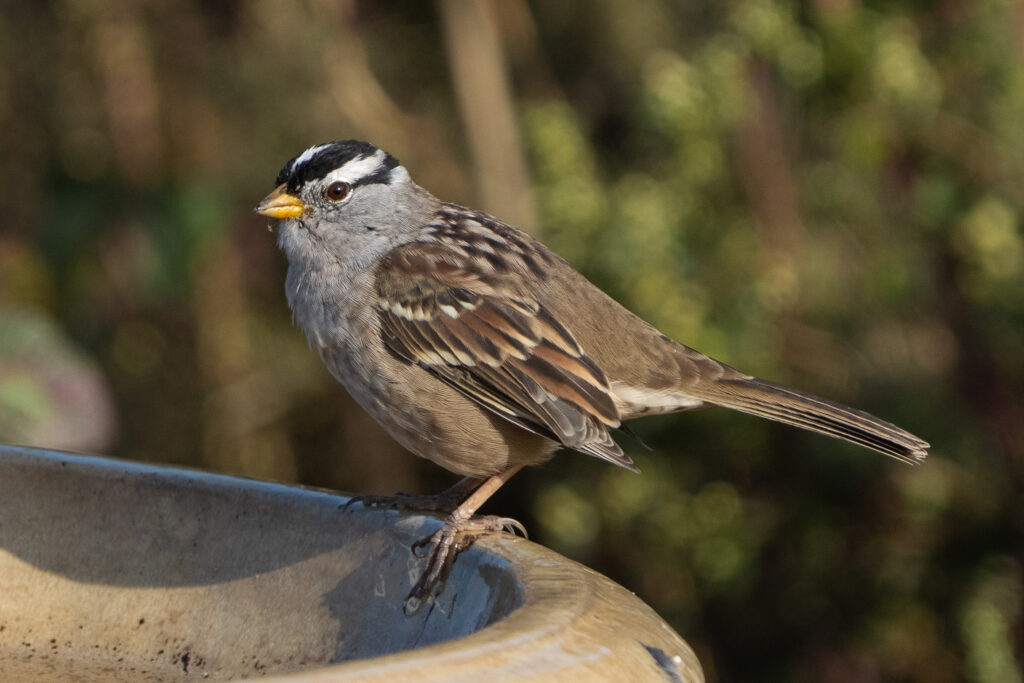
White-crowned Sparrow enjoying the bird bath at the Point Buchon trail head, September 17, 2023.
A pair of Kestrels disputed possession of a large pine tree in the distance, while farther down the trail, we encountered the typical chaparral species: California Towhee, Spotted Towhee, California Thrasher, and several more white-crowns. A few Barn Swallows flew by, just on the edge of identifiability, both here and later on in the trip.
Point Buchon is the place where Coon Creek debouches into the Pacific; although the creek was running quite rapidly under the bridge near the start of the trail, it seemed to calm down quite a bit by the time it reaches the little lagoon near the shore, which betrayed nary a ripple from the flow. On the reed stalks and in the fields surrounding the lagoon there were quite a few finches, both House Finch and Lesser Goldfinch.
An Osprey was hunting in the waters just off the beach and gave us some close views:
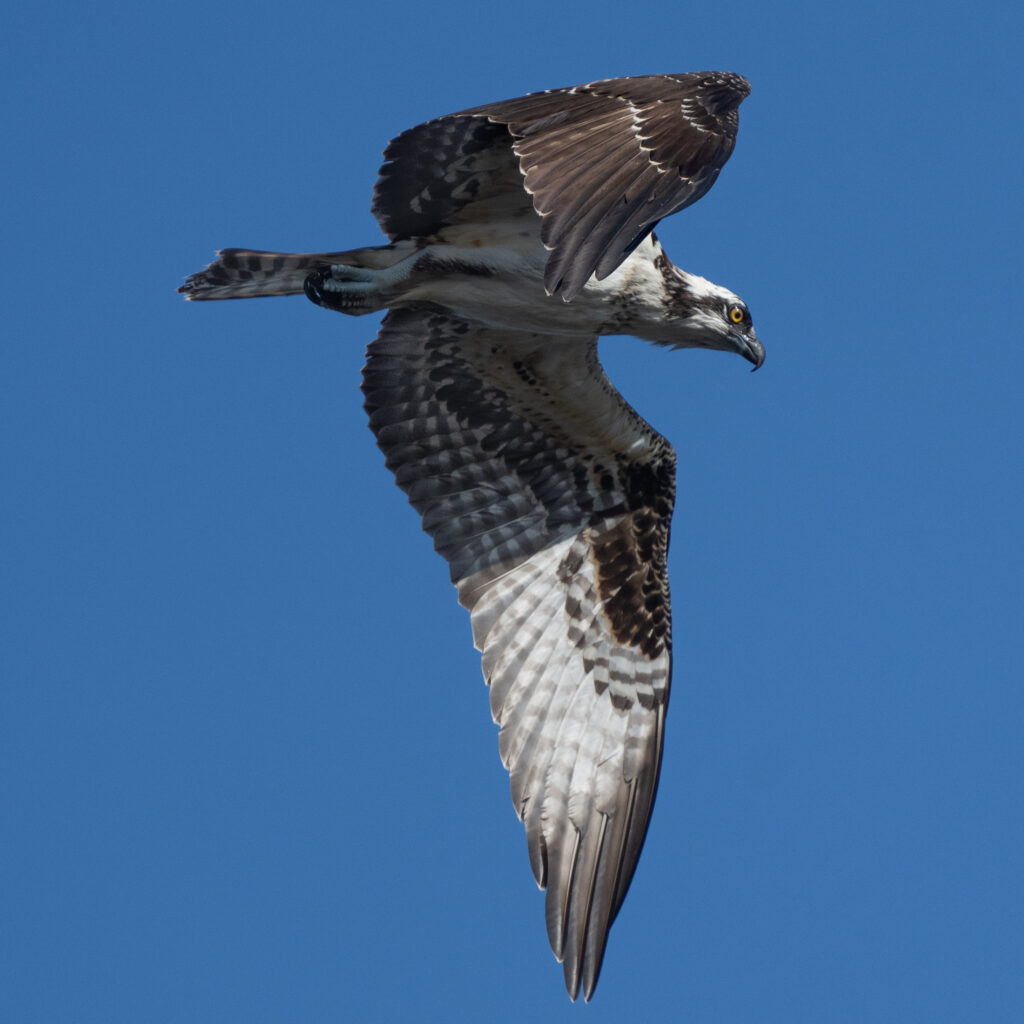
Osprey flyby, Point Buchon, CA, September 17, 2023
Our presence didn’t seem to give it much luck, though–its talons came up empty from the one splash-dive hunt I was able to witness.
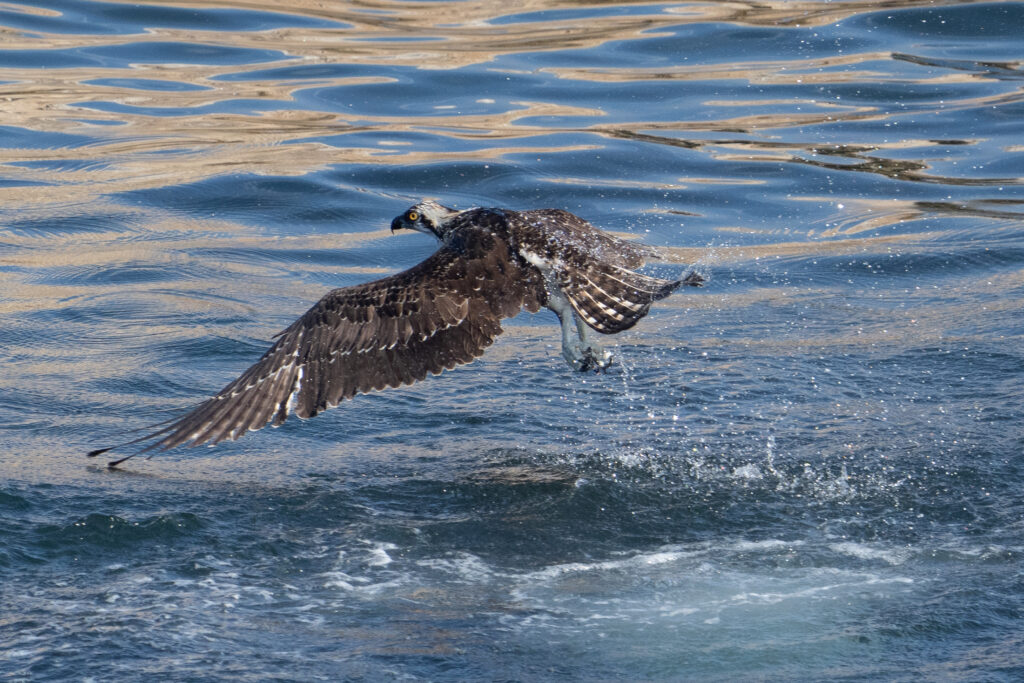
Osprey after an unsuccessful hunting dive. Point Buchon, CA, September 17, 2023
Throughout the morning, there were dozens of flocks containing from scores to hundreds of Brandt’s Cormorants flying single file down low to the water, along with as many flights (but typically with fewer individuals) of Brown Pelicans. Western Gulls were everywhere, from the beach to the rocks to the kelp beds.
We found two shorebird species: there was a lone Spotted Sandpiper on one of the offshore rocks, and high up on the cliffs, right next to the trail, a couple of Long-billed Curlews hunting in the field, well away from the shoreline where we’d have expected to find this species.
Further down the line, we were treated to a magnificent sight of a humpback whale and calf lazing around in plain view from the clifftops, seeming to be in no hurry to get anywhere. Presumably there was a baitball or other attraction to the area, unless it was just a Sunday stroll for them as it was for us. (Due to camera operator newbieness, I was unable to come up with any satisfying images.)
A few Black Phoebes were both seen and heard along the cliffs as well.
The turnaround place for most of the group was Disney Point, so named because the point was the location of a lighthouse featured in a Disney film from the 1970s, Pete’s Dragon. Apparently the production crew for the film built a lighthouse that featured in the movie, and that lighthouse was located here. According to the website SLO CAL Film Trail, “although the lighthouse was disassembled post-production, the point where it once stood has been designated as “Disney Point” and can be found along the popular Point Buchon walking trail.”
A few members of the group peeled off at that point to continue their hike, and we trust that they returned safely, although we never heard from them again and disclaim all legal responsibility for their physical and mental well-being. The rest of us returned, enjoying close-up views of a California Quail and then, right over the creekbed we’d passed earlier, a veritable extravaganza of little birds: Blue-Gray Gnatcatcher, Wilson’s Warbler, Orange-Crowned Warbler, and Common Yellowthroat.
All told, the group tallied a total of thirty-three species for the morning.
Etymological note: according to Mark P. Hall-Patton’s Memories of the Land: Placenames of San Luis Obispo County, Point Buchon takes its name for the Spanish word for goiter:
In Spanish, buchón means goiter, and this name was given by men of the Portolá expedition to a local Chumash chief because of the goiter on his neck.
Mark P. Hall-Patton, Memories of the Land (1994)

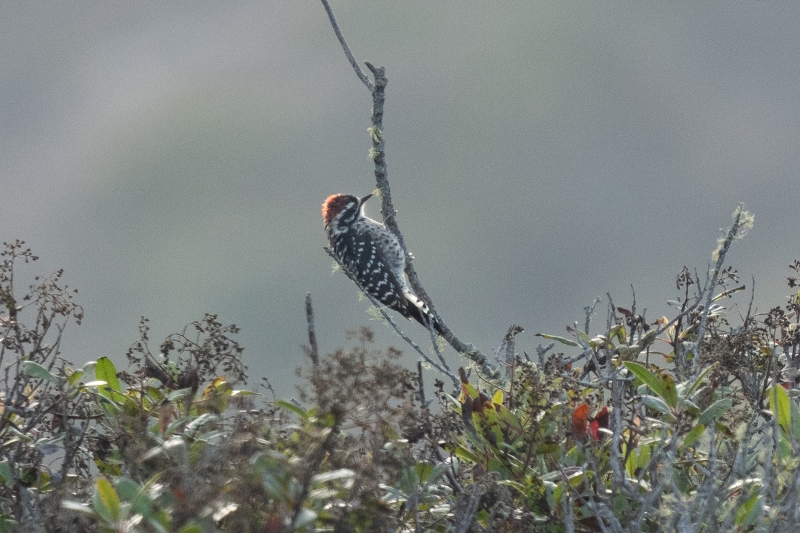

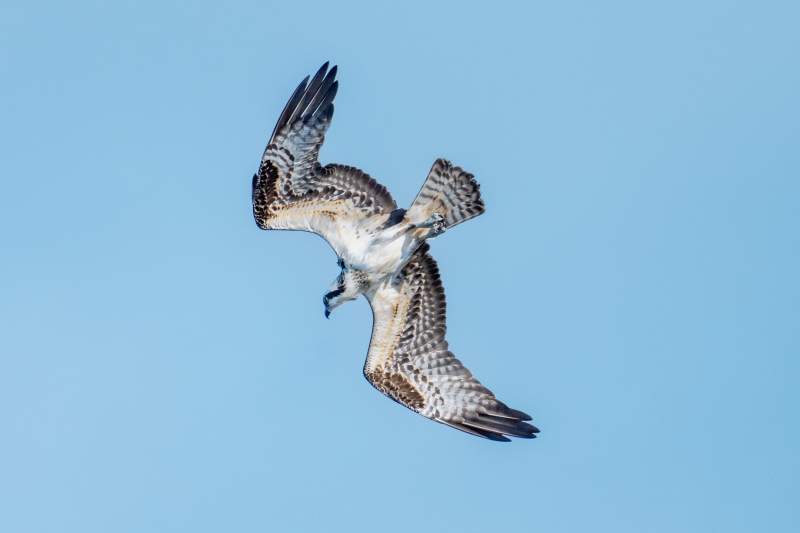
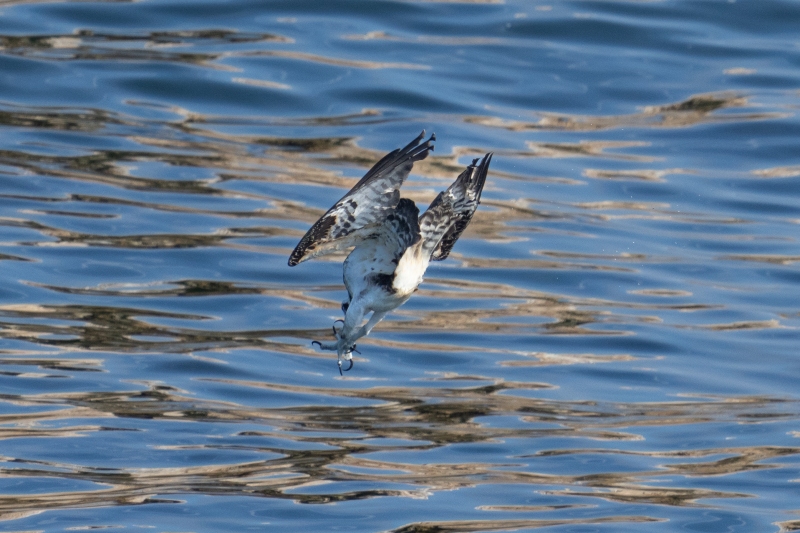

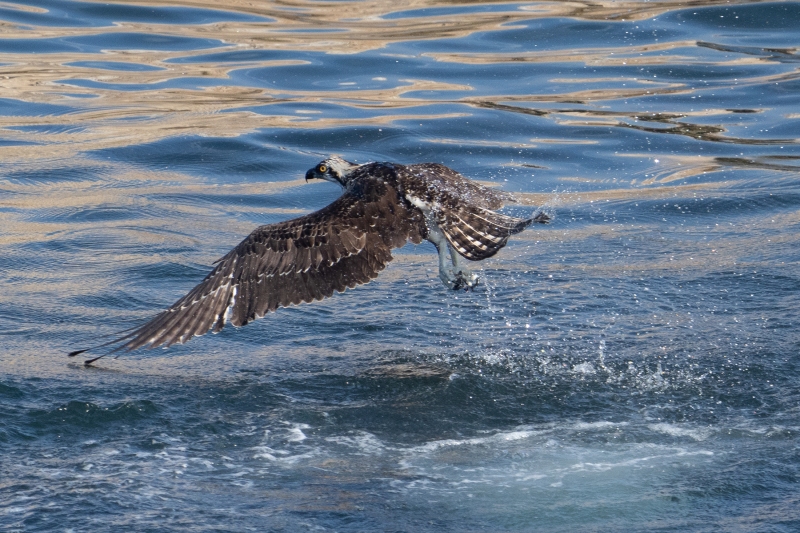
GREAT write-up, Ben! And a very fine photos early on – I especially favor the Osprey post-dive. Look forward to seeing you out and about again. I included my own web posting that I have not used in many years. However, you may have inspired me to reconsider.